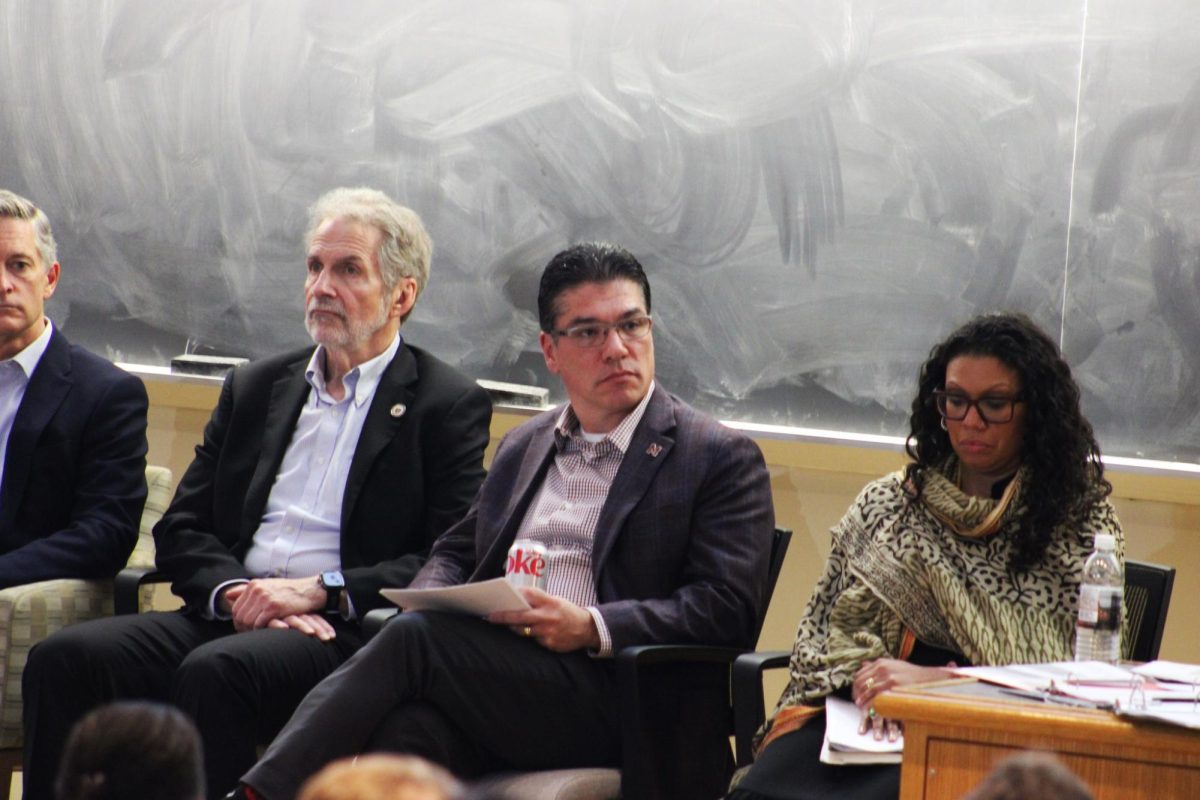On Thursday, April 18, Cecilia Conrad delivered the 25th Philip Gamble Memorial Lecture in Bowker Auditorium at Stockbridge Hall. Conrad is Professor Emerita of Economics at Pomona College, Senior Advisor to the philanthropic MacArthur Foundation and CEO of nonprofit Lever for Change.
The Philip Gamble Memorial Lecture was established by Israel Rogosa ‘42 and is conducted in honor of Philip Gamble, Chair of the University of Massachusetts’ Economics Department from 1942 to 1965. In this year’s lecture, Conrad opined how certain existing philanthropic practices and organizations are either ineffective or obstructive in giving rise to social justice and equity and how those practices must be restructured in order to benefit society.
Conrad opened her lecture by describing her experiences in academics, and explained how economics and philanthropy are connected to each other as well as social issues. She described how economics involves managing limited resources so that they are used productively, and how her philanthropic work essentially entails managing philanthropic dollars, so they are used for good causes.
Conrad introduced her organization, Lever for Change, as a case study that questioned “the nature of philanthropy and […] the extreme concentration of wealth that we now see in society,” and whether charitable acts could impact the results of inordinate funds being allocated to the wealthiest sector of the population. She introduced the “ultra-high-net-worth individual,” referencing the data source Wealth-X, as somebody with a net worth of $30 million or higher.
Conrad then presented her three main takeaways. First, she claimed that although individual philanthropy could limit the negatives of the concentration of wealth in an ultra-rich sector, current donor habits cause those difficulties to not only stagnate, but potentially worsen. The funds that are currently donated are insufficient and are not always used for social improvement.
She stressed the importance of changing current donor habits to facilitate social equity. Conrad explained how Lever for Change had aided more than $2 billion worth of donations to social change organizations, largely contributed by ultra-high-net-worth individuals.
Conrad also expressed the importance of a better understanding of donor habits, which she said would contribute to a more effective allocation of charitable resources to social causes. She encouraged trained economists and students alike to conduct more research on the manner in which funds are donated and what causes they are donated to, and on how public policy reforms could bring about changes in the current philanthropic system.
Overall, as Conrad indicated, ultra-high-net-worth philanthropists could effectively substitute public-sector philanthropy. For example, she acknowledged Julius Rosenwald, who was the President of Sears, Roebuck and Company, for spending his fortune on establishing schools for Black children in the South.
Conrad explained how private philanthropy could become the society’s risk capital (which is defined as the funds used to support monetary risks) because speculative risks are taken on universal basic income experiments that would not normally be conducted by either private organizations or the government. She also explained how private donations could support self-governed institutions that contribute to amplifying citizens’ voices, citing how private philanthropy was used to support Black Lives Matter.
However, the concept of private philanthropy was not without its opponents.
“We’ve had this increase in wealth inequality coupled with a decline in giving […] which results in the increase of the power and the influence of the wealthiest,” Conrad said, using a graph from the Lily School of Philanthropy to display how the percentage of American households that donate to nonprofit organizations had declined from 66.2 percent to 55.1 percent between 2000 and 2016. According to Conrad, this decline was due to people deciding not to donate money to charity, believing that there were others who were considerably wealthier and therefore more able to donate.
Conrad cited Forbes 400 to establish that only eleven out of the 400 wealthiest Americans had donated at least 20 percent of their wealth to charity, whilst most only donated up to five per cent. In 2021, the total assets contributed to donor-advised funds increased to over 230 billion dollars, reducing only slightly since; the most causes supported by members of the Giving Pledge are education-oriented, whilst the least fund public policy. The main problems that Lever for Change seeks to rectify are that of donors having difficulties in selecting causes to fund, and of organizations that could potentially bring about significant social change lacking sufficient finances because of weak relationships with donors.
Conrad explained that Lever for Change allows facilitators to help determine how money should be assigned. Donors would have the chance to select which projects they could invest in, reducing the levels of risk that they would perceive. Lever for Change also develops “bold and uncommon” solutions to problems and advertises these highly rated remedial projects to other potential sources of funding. Conrad stated that the nonprofit’s efforts have raised 2.218 billion dollars to be raised from over 100 donors, 44 percent of highly rated projects to be led by members of the community it serves, and 60 percent of projects to be declared “bold and uncommon” by self-governed entities.
Conrad also raised the questions of what financial risks could be involved in philanthropy (or whether at all there are any risks), and what changes in public policy could increase the level of charitable donations that actively alleviate the ill effects of wealth disparities.
“My approach here has been that there is an opportunity to engage in a form of philanthropy that could mitigate some of the consequences of the concentration of wealth. It’s not that philanthropy is going to be a panacea – sort of taking from a starting point as we have this wealth concentration, we lack the political will to do anything by fiat, what can we get through this other vibrant sector of philanthropy and nonprofits,” Conrad said before opening the room for questions.
The livestream for the 25th Philip Gamble Lecture can be found here.
Kalana Amarasekara can be reached at [email protected].



















